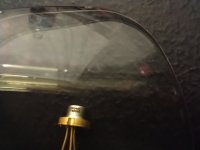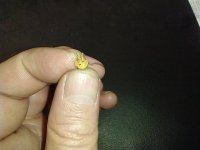- Joined
- Apr 23, 2011
- Messages
- 178
- Points
- 28
So it's been about 11 years since I've joined and posted. I dusted of my box of bits that started as a lasing project to try and finish, or toss lol
I found this diode in the box with no recollection of where I got it nor it's specs, and the lettering is super tiny, can't fully make it out but hoping someone here might recognize it.
Looking for specs so I can try and test it...
Thanks!
Edit: Here's a backside shot too, maybe someone can give recommendations on how to test w/o knowing specs. also, I've tried searching what the I'm perceiving to be written on the case but not turning anything up. While no idea where I got it, I am fairly certain it was from a vendor I found on here. All three pins are the same length, with the two lower ones looking like they have a small isolator around them going through the case.
Also, just so you know, images are thumbnails, clicking will enlarge and you can see it
I found this diode in the box with no recollection of where I got it nor it's specs, and the lettering is super tiny, can't fully make it out but hoping someone here might recognize it.
Looking for specs so I can try and test it...
Thanks!
Edit: Here's a backside shot too, maybe someone can give recommendations on how to test w/o knowing specs. also, I've tried searching what the I'm perceiving to be written on the case but not turning anything up. While no idea where I got it, I am fairly certain it was from a vendor I found on here. All three pins are the same length, with the two lower ones looking like they have a small isolator around them going through the case.
Also, just so you know, images are thumbnails, clicking will enlarge and you can see it
Attachments
Last edited:







